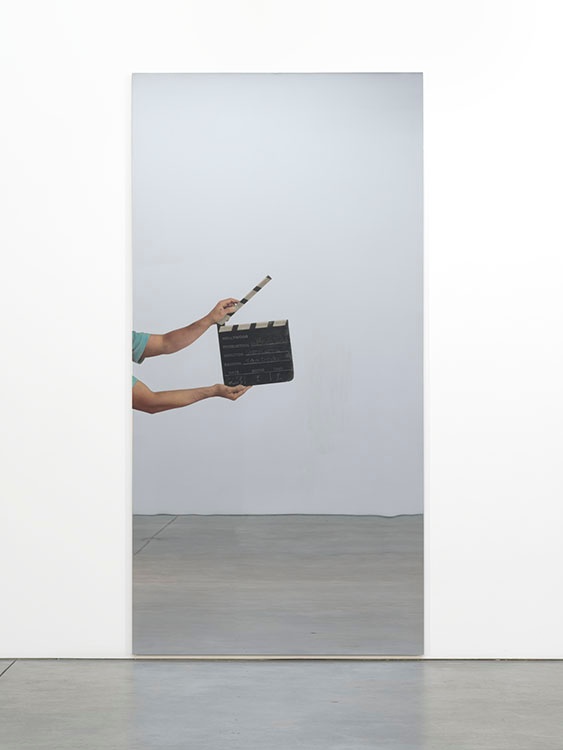Michelangelo Pistoletto

Pictures, Pistoletto believed, need not be static, nor separated from the viewer and their surroundings, flat in form and affect. With reflections, pictures could instead become “the self-portrait of the world,” with their smooth surface of illusionary depth. By pairing physical space with its reflection, by making the viewer a part of the picture, he proposed that the distinction between image and life was all but irrelevant. In his many mirror paintings – of which Ciak Azzuro is a wonderfully humorous example – Pistoletto found an eloquent pairing of both his conceptual and figurative preoccupations. He did not renounce the image, as so many contemporaries had, but rather expanded its definitions.
b.1933, Biella
To Michelangelo Pistoletto, the reflected image has revolutionary potential to unify art and life. He first began working with reflective surfaces as a proposition for the pictorial in a modernist mode. Figurative painting had reached a historical impasse – it was the 60s; no one cared for pictures, only materials and actions and aesthetic ‘purity’. How might one then represent the world as image? Using first collage techniques and later silkscreens, Pistoletto transferred life-size photographs of people onto highly polished steel plates. It was a simple gesture of trompe l'oeil, yet one of lasting effect. The large plates, hung to the floor, appear at first as doorways opening onto adjacent rooms. That is, until the viewer, moving towards the work, catches sight of their reflection in the frame. For Pistoletto, “the mirror always represents infinity, totality, and the possibility of the viewer to be part in the work through his reflection.” His mirror paintings invite the viewer into their image-making, their surface at once figurative, performative and interactive. The “true protagonist” of the painting, the artist writes, is the “instantaneousness that was created between the spectator, his own reflection, and the painted figure.” Which is to say that time, rather than object or image, is the work’s primary medium; the work taking shape in the spontaneous moment of recognition – the moment of art-meets-life.